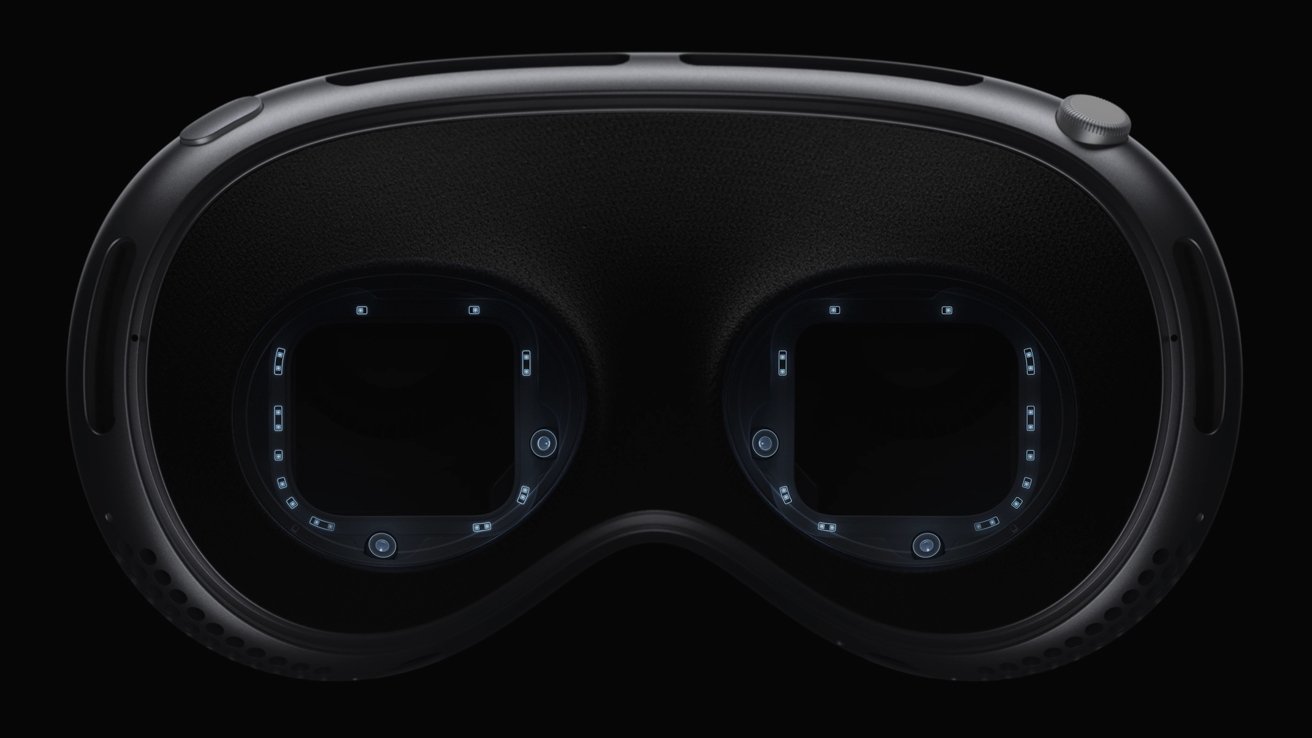How Apple Vision Pro deals with Monovision -- and what vision problems it can't deal with
It was known that Apple has Zeiss lenses for correcting vision while wearing the Apple Vision Pro, but there was a surprise third option -- Monovision. Here's what it means, what Apple can't correct for, and how to tell if you need to select it when you buy a headset.

Apple Vision Pro gaze detection sensors
Apple requires all users to confirm that they don't need glasses or contacts, there's no option to skip the step. However, a third option presented itself during the order process, asking the user if they had correction for Monovision.
What is Monovision?
Monovision is a vision correction technique that corrects the user's dominant eye for distant vision. The correction can be through refractive surgery, lens implants, or contact lenses. It's generally used for older users, whose eye variance increases over time.
The non-dominant eye is left nearsighted. This allows for clearer vision at any distance, good long range, and good close vision, but not 20/20 in every case.
How does Apple Vision Pro deal with Monovision?
In the case of the Apple Vision Pro, the inserts need to be tailored to counter-correct surgical distance vision correction with lensing. If you select the surgical correction of Monovision, there is a follow-up series of questions to determine what combination of lenses is required to use the unit.
Users with contacts to correct monovision should remove them and use Zeiss inserts based on the available comprehensive prescription.
Pricing varies based on what you need for correction, and it's not clear if in-store will have all the lenses required for any order.
Other vision issue concerns with Apple Vision Pro
A support document spells out that users who have prism prescriptions aren't served at this time. Prism prescriptions are used in the case of neurological vision cuts and other conditions that limit the user's vision field.
Apple also makes it clear that there may be other issues.
"Some medical conditions, such as those involving eyelid drooping, changes in eye alignment (including strabismus or lazy eye), or uncontrolled eye movements (including nystagmus) might make it difficult for Apple Vision Pro to properly detect your eyes. This might impact the visual experience."
Apple makes it clear that the experience can be tailored. Instead of using eye tracking, users can customize Accessibility features for the headset to watch your wrist, head, index finger, or voice for navigation.
Read on AppleInsider

Comments
It's less attention to detail and more a result of engineering decisions, that Apple needs to be that detailed.
People who are sensitive to OLED flickering (PWM et al) are kind of flying under the radar for the VP. For some who feel nauseous or have headaches with the VP, it may not be from motion sickness, but from OLED PWM. We don't know if the VP OLEDs use PWM, but if it does, it could drive some users to be sick from it as the strobing is literally being magnified through the lens just for your eyeballs.
There are some people who have wandering eyes. The eye tracking is going to have a rather hard time with that. Drooping eyelids have already been mentioned. For some people, having something pressing against the sinuses in the forehead, nasal areas, and around the eyes could be enough. This could present itself as a headache. There are days where I get a sinus headache and sinus pressure on my eyes just from wearing my 20 gram glasses.
And of course, there is the motion sickness. I can feel nauseous from playing a 3D driving game or FPS, even with Doom 1.
So, if 1% of the, say, 50,000 VP users on Feb 3rd have one of these issues, that's 500 people who could go screaming about it to social media, where 500 media outlets will amplify it to tens of millions of people. Fun!